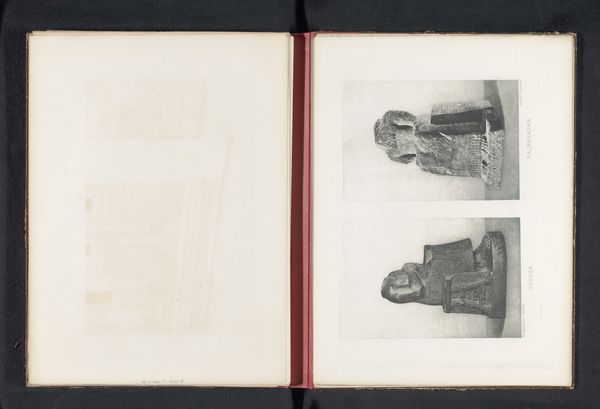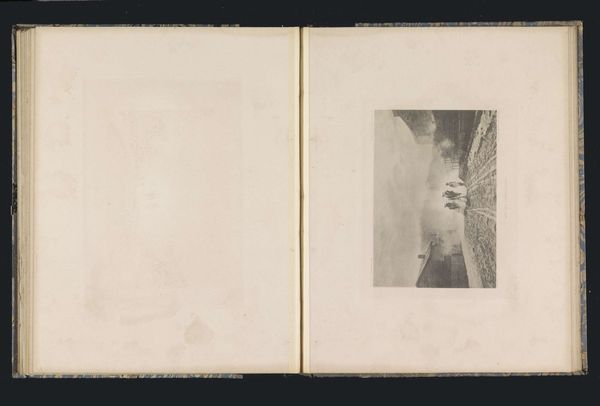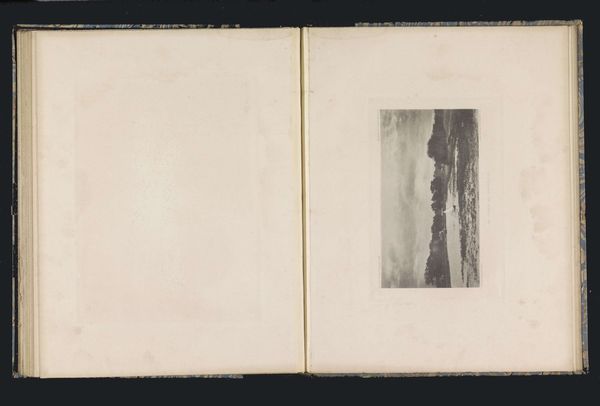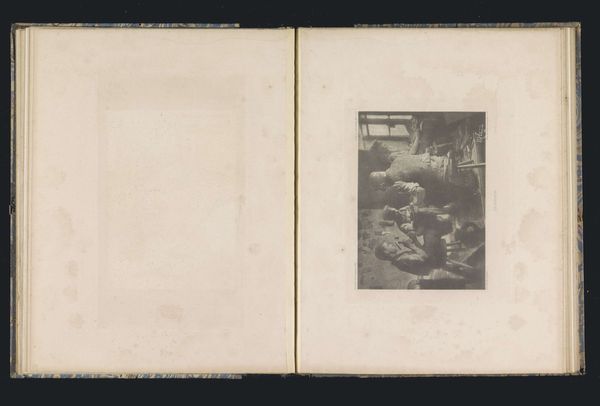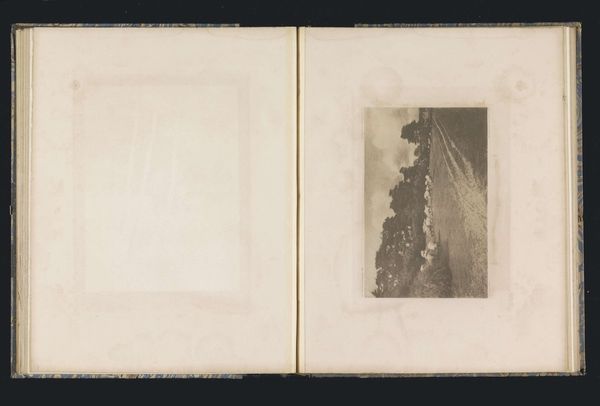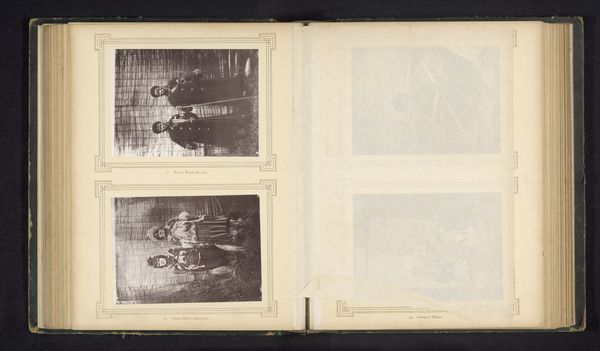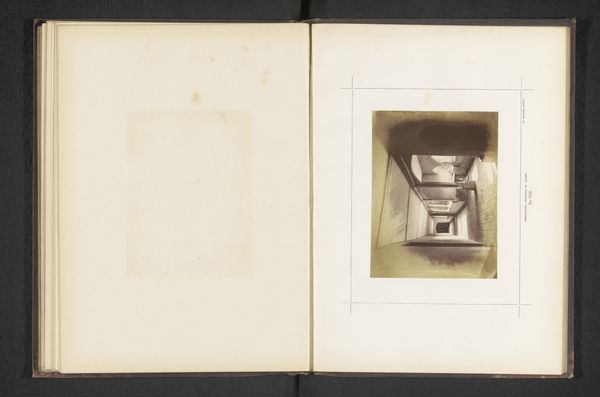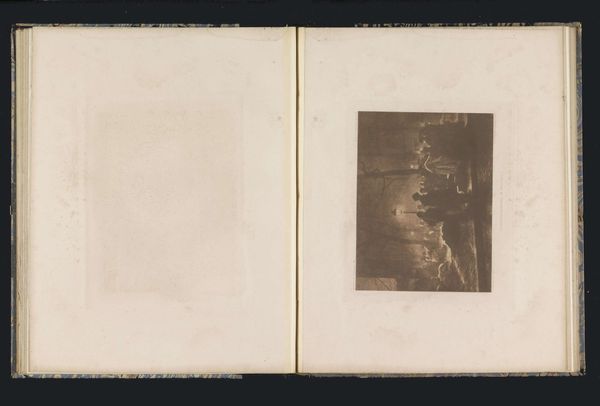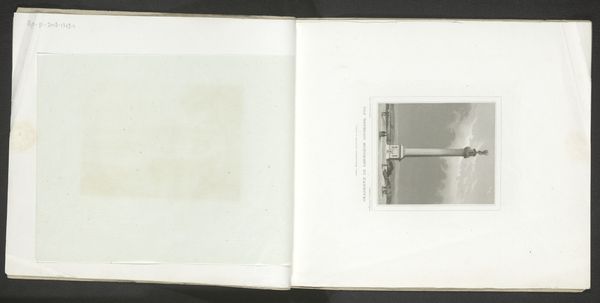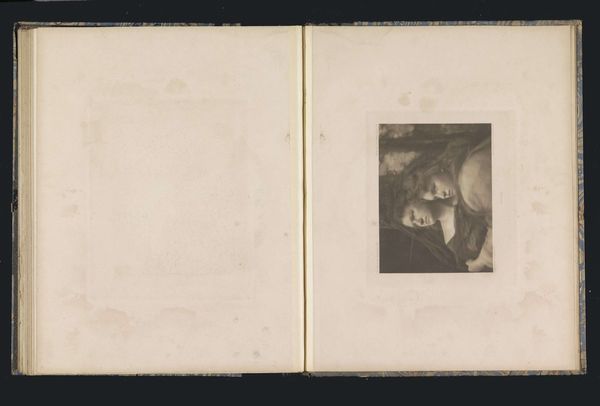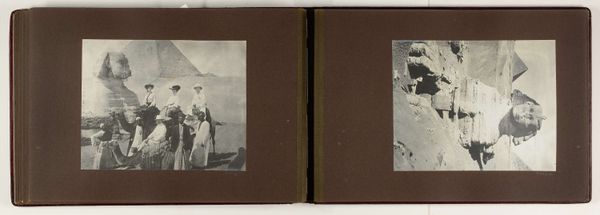
photography
#
portrait
#
photo of handprinted image
#
toned paper
#
muted colour palette
#
photography
#
muted colour
#
genre-painting
#
history-painting
#
academic-art
#
realism
Dimensions: height 245 mm, width 160 mm
Copyright: Rijks Museum: Open Domain
Curator: Immediately, the sequential presentation lends the photograph an analytic feeling, reminiscent of scientific studies from that period. Editor: Indeed. This photographic study, "Portraits of a Man with Three Movements of His Upper Arm," predates 1886 and, attributed to Nicola Tonger, is housed within an open album format, presenting a figure in three distinct arm positions. It speaks volumes about the scientific ambitions of the period. Curator: Yes, and observe the composition; the tonal range, from the darker browns of the figure's suit to the subtle shifts in the toned paper, establishes a visual structure. The symmetry, however imperfect, suggests an exploration of formal structure. Editor: Right, this use of photography highlights the prevailing academic interest in objectively documenting the human form. We should also note its place within the development of artistic studies into realism and human expression. Curator: Consider too the semiotic impact of his gestures—a beckoning? A measurement? The lack of clarity amplifies the viewer's engagement. It's through this ambiguity that we glean a sense of deeper human intentions, the potentiality of form. Editor: Absolutely. Placed within the social and institutional framework of late 19th-century Dutch art, it provides an insight into the academic methods. Also, this photographic method started appearing due to public demand that helped shape artistic interpretation of those movements. Curator: This highlights how photography wasn’t solely a medium for creating mimetic portraits; instead it presented conceptual and performative dimensions, shaping public perceptions as photography became integrated into science and art. Editor: By examining the piece we can understand how an artist's view shapes and responds to emerging public interests in objective representation and scientific insight. A really important bridge in that shift we see occurring at the time. Curator: Agreed, I was absorbed in the semiotics, so thanks for contextualizing our subject so clearly in its place. Editor: Of course; my pleasure. It is in understanding how images circulate publicly that its form is realized in history.
Comments
No comments
Be the first to comment and join the conversation on the ultimate creative platform.
